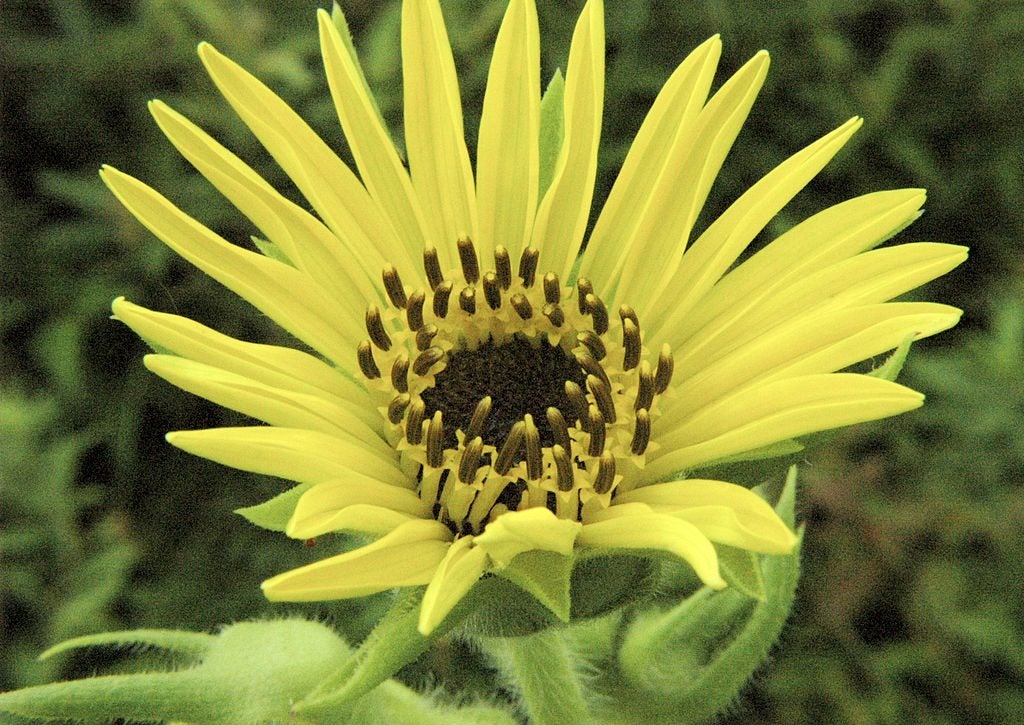Compass Plant Information: Tips On Compass Plant Uses In Gardens


Compass plant (Silphium laciniatrum) is a native of the American prairies. Unfortunately, like the prairielands, the plant is declining due to loss of habitat. Growing compass plant flowers in the garden is one way to ensure this lovely plant doesn’t disappear from the American landscape. Read on to learn more about garden compass plants.
Compass Plant Information
Compass plants look much like wild sunflowers, but although they are both members of the Asteraceae family, they are not the same plant. Compass plants are tall plants with sturdy, bristly stems that reach heights of 9 to 12 feet (2.5 to 3.5 m.). The deeply cut leaves, which resemble oak leaves, can reach lengths of 12 to 18 inches (30.5 to 45.5 cm.). Clusters of bright yellow, daisy-like flowers bloom on the upper part of the plant during the hot summer months. According to available compass plant information, the plant’s unusual name was granted by early settlers who believed the plant’s huge basal leaves point north-south. While this is often true, a compass is more reliable. The growth direction is likely a way for the plant to maximize water and sunlight in the rugged prairie environment.
Compass Plant Uses
Compass plant is a natural in a wildflower meadow, prairie garden, or a native plant garden. Important compass plant uses include its ability to attract a number of important pollinators, including a variety of native bees and several types of butterfly, including the Monarch butterfly. Locate this towering plant behind shorter wildflowers.
Compass Plant Care
Compass plant care is minimal as long as the plant is sited in full sun and moist to slightly dry, well-drained soil. The plant needs deep soil to accommodate its long taproot, which can reach lengths of 15 feet (4.5 m.). The best way to start compass plant is to sow seeds directly in the garden, either unstratified seeds in autumn or stratified seeds in spring. Be patient; two or three years are required for compass plant seedlings to grow into full-size, blooming plants, as most the energy is directed towards development of the roots. However, once the plant is established, it can survive for up to 100 years. Established plants self-seed readily. Compass plant is drought-tolerant but benefits from occasional watering, especially during hot weather. Be aware that the compass plant can become top heavy, especially when planted on windy slopes.
Gardening tips, videos, info and more delivered right to your inbox!
Sign up for the Gardening Know How newsletter today and receive a free copy of our e-book "How to Grow Delicious Tomatoes".

A Credentialed Garden Writer, Mary H. Dyer was with Gardening Know How in the very beginning, publishing articles as early as 2007.
-
 8 Perfect Flowers To Plant With Tomatoes To Boost Yields & Banish Pests
8 Perfect Flowers To Plant With Tomatoes To Boost Yields & Banish PestsDon’t forget flowers when choosing companion plants for your tomato beds or pots. These pretty, fragrant blooms add beauty but are also highly beneficial.
By Mary Ellen Ellis
-
 Want The Longest Lasting Hydrangea Flowers? Grow These 8 Panicle Hydrangea Varieties
Want The Longest Lasting Hydrangea Flowers? Grow These 8 Panicle Hydrangea VarietiesFor ornamental shrubs that deliver the longest flowering seasons with plush blooms and delicate hues, these panicle hydrangea varieties are essential in your yard
By Tonya Barnett